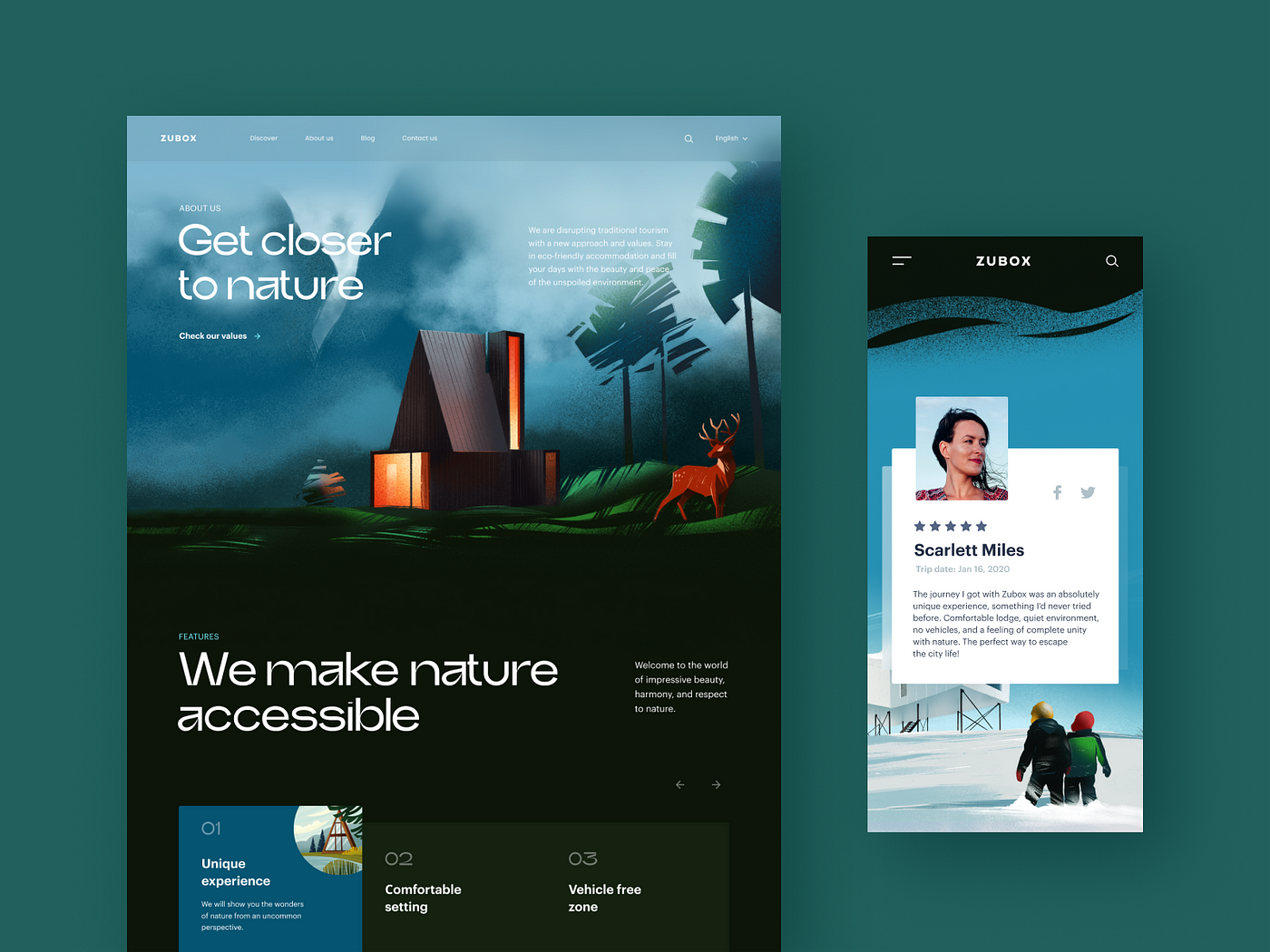How Web Design Johannesburg Experts Can Boost Your Brand Name Identity
Wiki Article
Unwinding the Intricacies of Receptive Website Design and Its Influence on Access and Capability Throughout Numerous Instruments
Receptive web style (RWD) has emerged as a fundamental method in creating digital experiences that are both accessible and functional across diverse devices. By integrating techniques such as liquid grids and CSS media questions, RWD not just improves individual interaction however likewise addresses essential access concerns for individuals with impairments. As the landscape of digital interaction continues to develop, recognizing the ramifications of RWD becomes necessary. The intricacies involved in achieving this equilibrium raise relevant questions concerning finest practices and possible mistakes that necessitate further expedition.Comprehending Receptive Website Design
Responsive internet layout symbolizes the concept of adaptability, making sure that sites give an ideal watching experience across a selection of tools and screen sizes. This method utilizes versatile grids, formats, and photos, enabling the material to dynamically change based on the customer's tool. The rise of mobile internet usage has made receptive layout not just a fad, however a requirement for modern-day internet growth.At its core, responsive web design emphasizes fluidity and scalability. By utilizing CSS media queries, developers can tailor styles to differing display measurements, guaranteeing that text remains readable and pictures are shown properly. This method fits the diverse range of gadgets, from mobile phones to huge desktop monitors, facilitating seamless navigation and communication.
Furthermore, receptive website design improves user interaction by minimizing the demand for excessive zooming or straight scrolling, which can diminish the individual experience. By prioritizing ease of access, organizations can get to a more comprehensive audience, guaranteeing that all users, no matter of gadget, can access content effectively. Ultimately, recognizing responsive web layout is critical for developing sites that are not only aesthetically attractive but also useful and straightforward throughout diverse platforms.

Trick Principles of RWD
Stressing flexibility and user-centric style, the vital principles of responsive website design (RWD) focus on producing a seamless experience no matter the gadget being made use of. One basic principle is fluid grids, which utilize family member units like portions rather than fixed measurements. This technique ensures that design components adapt proportionally to varying screen dimensions, maintaining visual coherence.Another important concept is adaptable pictures and media, which resize within their including elements. web design Johannesburg. By using CSS methods such as max-width, designers can prevent photos from surpassing their parent containers, ensuring that visuals remain sharp and suitably scaled across devices
In addition, media questions play an essential role in RWD, allowing programmers to use particular CSS styles based upon the qualities of the tool, such as height, alignment, and size. This capacity enables tailored experiences that enhance functionality and involvement.
Moreover, a mobile-first technique is progressively favored, where styles prioritize smaller displays and gradually boost for bigger gadgets. This concept not only maximizes performance however also attends to the growing frequency of mobile browsing. Collectively, these principles develop the foundation of responsive website design, cultivating a versatile and easy to use digital environment.

Influence on Accessibility
The assimilation of responsive website design plays an important function in improving accessibility for all individuals. By adopting an adaptable design that adjusts to differing display sizes and orientations, responsive layout ensures that content continues to be quickly accessible and understandable despite the tool used. This adaptability is particularly significant for individuals with disabilities, that might count on assistive innovations that work a lot more effectively when content is structured responsively.In addition, responsive internet style reduces the possibility of concerns such as straight scrolling, which can hinder individuals with electric motor impairments or aesthetic problems. By giving a consistent customer experience across tools, designers can prioritize availability attributes such as key-board navigation and display reader compatibility, enabling a much more comprehensive electronic atmosphere.
Furthermore, internet search engine progressively favor receptive layouts, which can enhance exposure for individuals looking for available content. As a result, organizations and companies are motivated to embrace these practices not just to comply with availability criteria yet also to get to a broader target market. Ultimately, receptive internet style is important in promoting equitable access to information and solutions throughout diverse user teams, thus cultivating an inclusive digital landscape.
Functionality Across Gadgets

Furthermore, the efficiency of web applications can differ considerably throughout tools. Smart phone typically have actually restricted handling power and slower internet connections, which can affect filling times and general individual experience. It is important for designers to maximize photos, manuscripts, and other sources to ensure that performance continues to be consistent and effective, despite the device being utilized.
Additionally, the layout and framework of material need to adapt fluidly to different screen sizes to preserve functionality. This adaptability not just boosts user engagement however additionally decreases frustration, inevitably bring about greater retention rates. In summary, focusing on capability across tools is necessary for creating a inclusive and effective internet presence that accommodates the varied needs of individuals.
Best Practices for Execution
Applying receptive website design efficiently needs a tactical approach that focuses on customer experience and access. To attain this, start by taking on a mobile-first design approach, which highlights developing an ideal experience for smaller sized displays prior to scaling as much as bigger tools. This approach makes certain that important web content is prioritized and that functions are effortlessly integrated.Next, utilize fluid grids and flexible layouts. Employ family member systems, such as portions, instead of taken care of systems like pixels - web design Johannesburg. This versatility permits content to resize dynamically based on the screen's measurements, enhancing functionality throughout numerous devices
Moreover, integrate media questions to use details CSS regulations based on the features of the tool, such as width, elevation, and resolution. This targeted approach enables for customized experiences that deal with the one-of-a-kind capabilities of each you could look here gadget.
In addition, prioritize access by ensuring that all interactive aspects are conveniently navigable by means of touch or keyboard. Apply semantic HTML to boost screen reader compatibility and preserve high comparison ratios for readability.
Verdict
Finally, receptive website design functions as a foundational aspect in developing useful and obtainable electronic experiences across diverse tools. By incorporating liquid grids, flexible images, and CSS media queries, responsive style not only improves individual interaction yet additionally advertises fair accessibility to details for all people, consisting of those with handicaps. Complying with ideal techniques in execution ensures that websites remain adaptable, inevitably cultivating an extra comprehensive electronic atmosphere that satisfies the varying needs of users.Receptive internet layout (RWD) has actually emerged as a basic approach in developing electronic experiences that are both easily accessible and practical across varied gadgets.Responsive web layout symbolizes the principle of adaptability, making certain that internet sites give an ideal viewing experience across a selection of gadgets and screen dimensions.Highlighting flexibility and user-centric layout, the vital concepts of responsive internet style (RWD) revolve around developing a seamless experience regardless of the gadget being utilized.Functionality throughout gadgets is an essential factor to consider in internet design, as customers involve with material through a selection of platforms, consisting of smart devices, tablets, and desktop computers.In final thought, receptive web layout serves as a foundational aspect in developing available and useful electronic experiences across diverse tools.
Report this wiki page